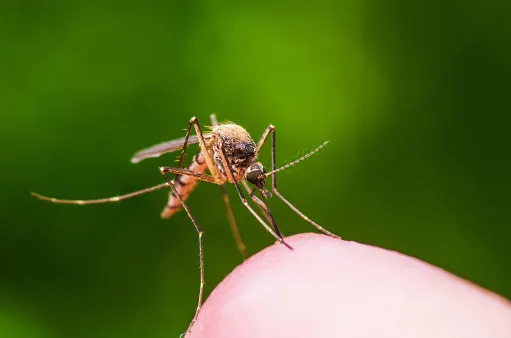
Researchers discover material that masks against mosquito attacks
Researchers at Brown University in Providence, R.I., have discovered that graphene oxide, a lightweight material 100 times stronger than steel, masks wearers from mosquito attacks.
“There are a bunch of papers on graphene as wearable and having different applications, like UV protection, ballistic protection, and chemical protection,” says Cintia Castilho, one of the lead researchers. “We just had the idea of adding an extra feature, which would be mosquito protection.”
Made out of a single layer of carbon atoms arranged in a repeating pattern of hexagons, graphene oxide not only protected against the mosquito’s proboscis (its blood-sucking needle-like mouth), but the material actually prevented “the mosquitoes from sensing that there was a human there.”
With test subjects wearing nothing but a thin layer of cheesecloth covered by a layer of graphene oxide, researchers found that mosquitoes wouldn’t even land on the subjects’ exposed skin. Costilho says this is because nano-sheets of graphene laid on top of one another create a multi-layer film. This film prevents the large sweat molecules that mosquitoes use to sense humans from diffusing through the material.
Graphene oxide’s one major flaw, however, is that it’s hydrophilic, making rainy days at the cottage an issue. “Once it’s wet, it absorbs the water and turns into this gel-like material,” Costilho says. “It’s very soft, and the mosquitoes are able to bite through.”
Visit our Complete Guide to Fall 2019 for an in depth look at the Fall Forecast, tips to plan for it and a sneak peek at the winter ahead
In an attempt to find a solution to the water absorption problem, researchers tested reduced graphene oxide, created by reducing the number of oxygen molecules in graphene oxide. While this second material did repel water, it had its own problems. “It is not breathable,” Castilho says—a characteristic that may not be noticeable on a cool spring morning, but wearing a suit made with reduced graphene oxide in a tropical climate or on a warm summer day could leave you feeling like you’re simmering in a fitted sauna.
To prevent this, the research team’s next steps will involve “trying to chemically modify or re-engineer the graphene oxide to be more water resistant.”
If the product were to be perfected, it could have a far-reaching impact on public health, “especially in tropical areas,” Castilho says, “where people are more affected by mosquitoes that carry diseases.”
She also adds that a graphene oxide suit would be cheap to manufacture. “The material’s not expensive,” Costilho says. “A lot of people think that because of the 2-D nanomaterial, it’s super expensive and fancy, but it’s quite the opposite. You’d be surprised.” She estimates that graphene costs approximately 20 cents per square foot.
If the research team can modify the graphene oxide’s hydrophilic properties and make it comfortable to wear, we may be looking at the future of cottage leisure wear.









